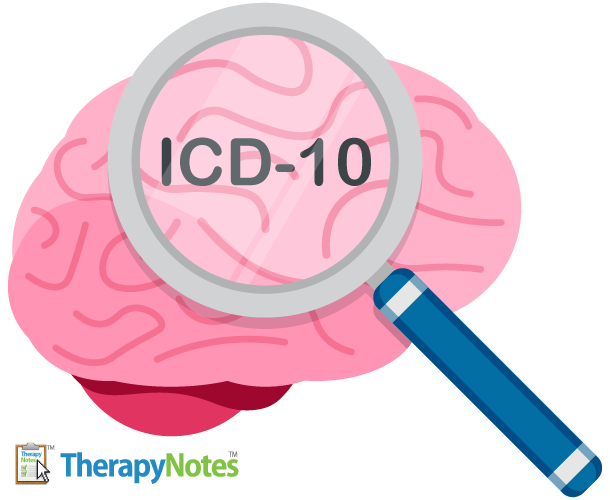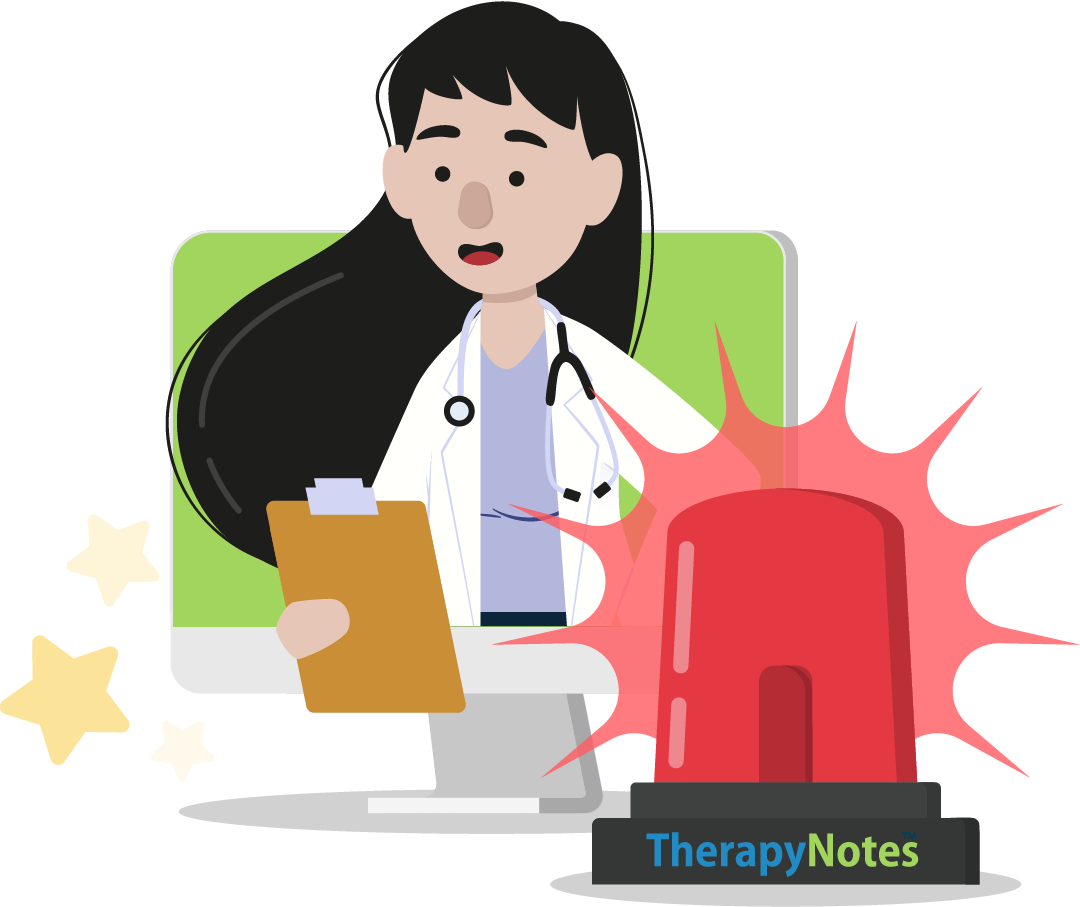Mental Health and ICD-10 Codes
By TherapyNotes, LLC on December 5, 2018

For mental health providers in the United States, the Diagnostic and Statistical Manual of Mental Disorders (DSM-5) is the official set of recognized mental health diagnoses. Developed and maintained by the American Psychiatric Association (APA), DSM-5 includes nearly all of the guidance a provider may need to diagnose any recognized mental disorder, which begs the question: Why should mental health providers care about ICD-10?
The International Classification of Diseases, 10th revision (ICD-10) is the standardized code set adopted by the Department of Health and Human Services (HHS) as mandated by the HIPAA Administrative Simplification guidelines to simplify the reporting of diagnoses and streamline communication between healthcare entities. Developed by the World Health Organization, ICD-10 includes thousands of diagnosis codes and their corresponding descriptions for all clinical disciplines, allowing providers, insurance payers, and government agencies who use the code set to uniformly report diseases and conditions for tracking and reimbursement.
While DSM-5 and ICD-10 are maintained by different organizations, the diagnostic codes you find in DSM-5 are actually ICD-10 codes. DSM-5 references ICD-10 codes and provides a comprehensive list of diagnostic criteria for each recognized mental disorder. Because DSM-5 and ICD-10 aren't strictly related, there may occasionally be disconnect between diagnoses in the two sets. However, one goal of a recent revision to DSM-5 was to better align diagnostic criteria and coding with the ICD-10.
All ICD-10 codes start with a single letter, followed by three or more numbers. The most commonly used ICD-10 codes for mental health disorders are clustered as F codes. F codes are further broken up into the following categories:
- F00–F09: codes for organic, including symptomatic, mental disorders
- F10–F19: codes for mental and behavioral disorders due to psychoactive substance abuse
- F20–F29: codes for schizophrenia, schizotypal, and delusional disorders
- F30–F39: codes for mood disorders, depression, and bipolar disorders
- F40–F49: codes for neurotic, anxiety, stress-related, and somatoform disorders
- F50–F59: codes for behavioral syndromes associated with physiological disturbances and physical factors
- F60–F69: codes for disorders of adult personality and behaviors
- F70–F79: codes for intellectual disabilities
- F80–F89: codes for pervasive and specific developmental disorders
- F90–F98: codes for behavioral and emotional disorders with onset usually occurring in childhood and adolescence
- F99: Unspecified mental disorder
- G codes for mental health: codes for disease of the nervous system
- Z codes for mental health: codes for factors influencing health status and contact with health services (includes the 2018 No Diagnosis or Condition code)
For an introduction to ICD-10 coding, watch this video from the CMS.
* The content of this post is intended to serve as general advice and information. It is not to be taken as legal advice and may not account for all rules and regulations in every jurisdiction. For legal advice, please contact an attorney.
Get more content like this, delivered right to your inbox. Subscribe to our newsletter.
More Content You'll Enjoy

Medicare Telehealth Update: New In-Person Visit Rules Effective January 2026

Understanding Medicare's Inclusion of MFTs and MHCs: An Informative Guide for Therapists
